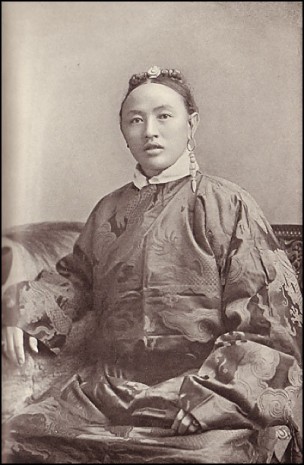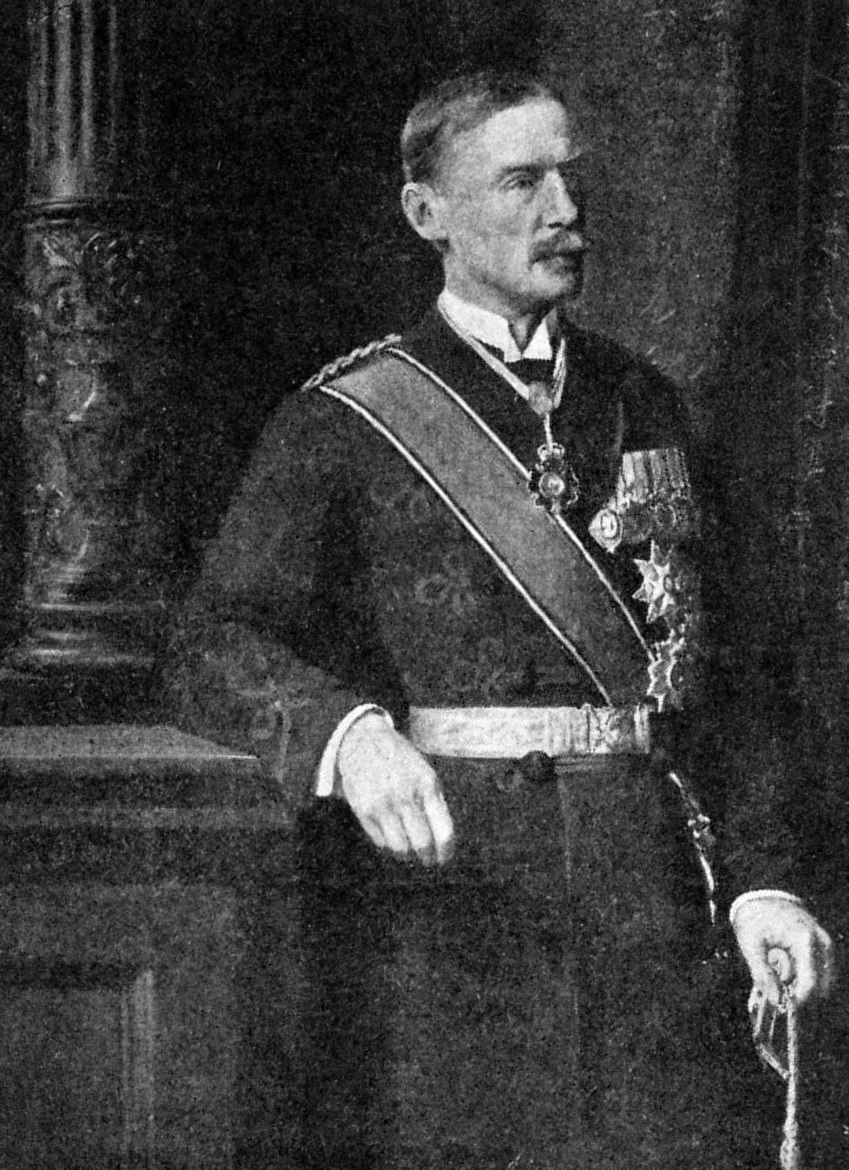|
Lonchen Shatra
Shatra (personal name Paljor Dorje, full title Longchen Shatra Paljor Dorje (blon chen bshad sgra dpal 'byor rdo rje); བཤད་སྒྲ ''bshad sgra''; དཔལ་འབྱོར་རྡོ་རྗེ; ''dpal 'byor rdo rje''; c. 1860 – c. 1923/1926), was a Tibetan politician. Family Shatra belonged originally to the Shangga family. He married, however, into thShatrafamily, took their name and was a wealthy man. Shatra's son is the former Kalon (Religion Minister) Shasur Gyurme Sonam Topgyal, also known aShenkhawa Career In 1890 he accompanied the Chinese amban on his trip to Darjeeling and supported him during the negotiations leading to the Anglo-Chinese border treaty. Shortly afterwards he was appointed Shappe (Minister). In 1903, he and the other three members of the inner cabinet (Kashag) were accused of treason by the Tsongdu for conspiring with the British. Conversely, however, the British accused him of conspiring with the Russians because of his cooperatio ... [...More Info...] [...Related Items...] OR: [Wikipedia] [Google] [Baidu] |
Paljor Dorje Shatra
Shatra (personal name Paljor Dorje, full title Longchen Shatra Paljor Dorje (blon chen bshad sgra dpal 'byor rdo rje); བཤད་སྒྲ ''bshad sgra''; དཔལ་འབྱོར་རྡོ་རྗེ; ''dpal 'byor rdo rje''; c. 1860 – c. 1923/1926), was a Tibetan politician. Family Shatra belonged originally to the Shangga family. He married, however, into thShatrafamily, took their name and was a wealthy man. Shatra's son is the former Kalon (Religion Minister) Shasur Gyurme Sonam Topgyal, also known aShenkhawa Career In 1890 he accompanied the Chinese amban on his trip to Darjeeling and supported him during the negotiations leading to the Anglo-Chinese border treaty. Shortly afterwards he was appointed Shappe (Minister). In 1903, he and the other three members of the inner cabinet (Kashag) were accused of treason by the Tsongdu for conspiring with the British. Conversely, however, the British accused him of conspiring with the Russians because of his cooperatio ... [...More Info...] [...Related Items...] OR: [Wikipedia] [Google] [Baidu] |
Prime Minister
A prime minister, premier or chief of cabinet is the head of the cabinet and the leader of the ministers in the executive branch of government, often in a parliamentary or semi-presidential system. Under those systems, a prime minister is not the head of state, but rather the head of government, serving under either a monarch in a democratic constitutional monarchy or under a president in a republican form of government. In parliamentary systems fashioned after the Westminster system, the prime minister is the presiding and actual head of government and head/owner of the executive power. In such systems, the head of state or their official representative (e.g., monarch, president, governor-general) usually holds a largely ceremonial position, although often with reserve powers. Under some presidential systems, such as South Korea and Peru, the prime minister is the leader or most senior member of the cabinet, not the head of government. In many systems, the prime minister ... [...More Info...] [...Related Items...] OR: [Wikipedia] [Google] [Baidu] |
Prime Ministers Of Tibet
A prime number (or a prime) is a natural number greater than 1 that is not a product of two smaller natural numbers. A natural number greater than 1 that is not prime is called a composite number. For example, 5 is prime because the only ways of writing it as a product, or , involve 5 itself. However, 4 is composite because it is a product (2 × 2) in which both numbers are smaller than 4. Primes are central in number theory because of the fundamental theorem of arithmetic: every natural number greater than 1 is either a prime itself or can be factorized as a product of primes that is unique up to their order. The property of being prime is called primality. A simple but slow method of checking the primality of a given number n, called trial division, tests whether n is a multiple of any integer between 2 and \sqrt. Faster algorithms include the Miller–Rabin primality test, which is fast but has a small chance of error, and the AKS primality test, which always pro ... [...More Info...] [...Related Items...] OR: [Wikipedia] [Google] [Baidu] |
Tibetan Politicians
Tibetan may mean: * of, from, or related to Tibet * Tibetan people, an ethnic group * Tibetan language: ** Classical Tibetan, the classical language used also as a contemporary written standard ** Standard Tibetan, the most widely used spoken dialect ** Tibetan pinyin, a method of writing Standard Tibetan in Latin script ** Tibetan script ** any other of the Tibetic languages Tibetan may additionally refer to: Culture * Old Tibetan, an era of Tibetan history * Tibetan art * Music of Tibet * Tibetan rug * Tibetan culture * Tibetan cuisine Religion * Tibetan Buddhism * Tibetan Muslims Other uses * Tibetan alphabet * Tibetan (Unicode block) * Tibetan name * Tibetan calendar * Tibetan Spaniel, a breed of dog * Tibetan Mastiff, a breed of dog See also * Tibetan Bells (other) * Traditional Tibetan medicine * Tibetan language (other) Tibetan language may refer to: * Classical Tibetan, the classical language used also as a contemporary written standard * Lhasa Tib ... [...More Info...] [...Related Items...] OR: [Wikipedia] [Google] [Baidu] |
1860 Births
Year 186 ( CLXXXVI) was a common year starting on Saturday (link will display the full calendar) of the Julian calendar. At the time, it was known as the Year of the Consulship of Aurelius and Glabrio (or, less frequently, year 939 ''Ab urbe condita''). The denomination 186 for this year has been used since the early medieval period, when the Anno Domini calendar era became the prevalent method in Europe for naming years. Events By place Roman Empire * Peasants in Gaul stage an anti-tax uprising under Maternus. * Roman governor Pertinax escapes an assassination attempt, by British usurpers. New Zealand * The Hatepe volcanic eruption extends Lake Taupō and makes skies red across the world. However, recent radiocarbon dating by R. Sparks has put the date at 233 AD ± 13 (95% confidence). Births * Ma Liang, Chinese official of the Shu Han state (d. 222) Deaths * April 21 – Apollonius the Apologist, Christian martyr * Bian Zhang, Chinese official and ... [...More Info...] [...Related Items...] OR: [Wikipedia] [Google] [Baidu] |
Sir Charles Bell
Sir Charles Bell (12 November 177428 April 1842) was a Scottish surgeon, anatomist, physiologist, neurologist, artist, and philosophical theologian. He is noted for discovering the difference between sensory nerves and motor nerves in the spinal cord. He is also noted for describing Bell's palsy. His three older brothers included Robert Bell (1757–1816) a Writer to the Signet, John Bell (1763–1820), also a noted surgeon and writer; and the advocate George Joseph Bell (1770–1843) who became a professor of law at the University of Edinburgh and a principal clerk at the Court of Session. Early life and education Charles Bell was born in Edinburgh on 12 November 1774, as the fourth son of the Reverend William Bell, a clergyman of the Episcopal Church of Scotland. Charles's father died in 1779 when he was five years old, and thus his mother had a profound influence on his early life, teaching him how to read and write. In addition to this, his mother also helped Charl ... [...More Info...] [...Related Items...] OR: [Wikipedia] [Google] [Baidu] |
Simla Convention
The Simla Convention, officially the Convention Between Great Britain, China, and Tibet, . Retrieved 20 March 2009 was an ambiguous concerning the status of negotiated by representatives of the , |
Simla Conference 1913
Shimla (; ; also known as Simla, the official name until 1972) is the capital and the largest city of the northern Indian state of Himachal Pradesh. In 1864, Shimla was declared as the summer capital of British India. After independence, the city became the capital of East Punjab and was later made the capital city of Himachal Pradesh. It is the principal commercial, cultural and educational centre of the state. Small hamlets were recorded before 1815 when British forces took control of the area. The climatic conditions attracted the British to establish the city in the dense forests of the Himalayas. As the summer capital, Shimla hosted many important political meetings including the Simla Accord of 1914 and the Simla Conference of 1945. After independence, the state of Himachal Pradesh came into being in 1948 as a result of the integration of 28 princely states. Even after independence, the city remained an important political centre, hosting the Simla Agreement of 1972. A ... [...More Info...] [...Related Items...] OR: [Wikipedia] [Google] [Baidu] |
Presidencies And Provinces Of British India
The provinces of India, earlier presidencies of British India and still earlier, presidency towns, were the administrative divisions of British governance on the Indian subcontinent. Collectively, they have been called British India. In one form or another, they existed between 1612 and 1947, conventionally divided into three historical periods: *Between 1612 and 1757 the East India Company set up factories (trading posts) in several locations, mostly in coastal India, with the consent of the Mughal emperors, Maratha Empire or local rulers. Its rivals were the merchant trading companies of Portugal, Denmark, the Netherlands, and France. By the mid-18th century, three ''presidency towns'': Madras, Bombay and Calcutta, had grown in size. *During the period of Company rule in India (1757–1858), the company gradually acquired sovereignty over large parts of India, now called "presidencies". However, it also increasingly came under British government oversight, in effect sh ... [...More Info...] [...Related Items...] OR: [Wikipedia] [Google] [Baidu] |
Kalon Tripa
The () is the political leader of the Central Tibetan Administration, a Tibetan exile organisation also known as the Tibetan Government-in-Exile based on the 2011 Charter of Tibetans-in-exile. The title was created in 2012 after the 14th Dalai Lama decided not to assume any political and administrative authority as the head of the Tibetan Administration for Tibetans-in-exile. The current Sikyong is Penpa Tsering. The Sikyong is the political leader of the Kashag, part of the executive branch of the Central Tibetan Administration. This office should not be confused with the "List of modern political leaders of Tibet#TAR Government Chairmen, Chairman of the People's Government of the Tibet Autonomous Region" (). The first directly elected Kalön Tripa was Lobsang Tenzin, the Samdhong Rinpoche, who was elected August 20, 2001. Based on the 13-Article Ordinance for the More Effective Governing of Tibet, Kashag should be composed of three temporal officials and one monk official. Ea ... [...More Info...] [...Related Items...] OR: [Wikipedia] [Google] [Baidu] |







